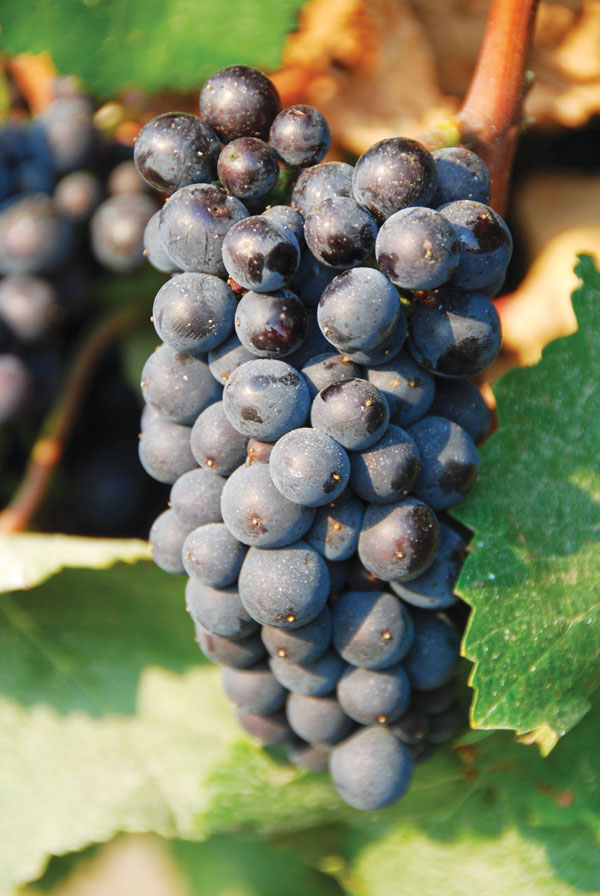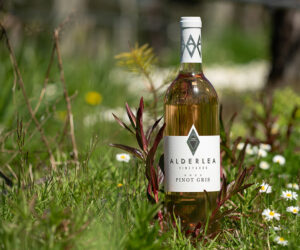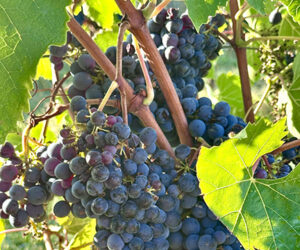A dossier of challenges

Over the last 25 years, working in all aspects of wine production, I will say that I have still not seen it all. While in my graduate study work at UC-Davis, I learned the principles and practices of winemaking from an academic standpoint. The teaching program focused on specific techniques or practices in winemaking, and the pros and cons of each. In the early years of learning on the job through my mentors, I learned what was “their way.” Which was the way they wanted their wines to taste, and it was my responsibility to help make the wines the way they wanted. I moved back to the University where I worked with faculty to produce research wines with a standard protocol that controlled experimental variables.
It may not have been the best way to make wine, but it was a controlled environment, which is critical on any research project to come to a significant, or conversely, insignificant conclusion. I also oversaw the production of student wines . . . where anything goes! I then wound up in a commercial venture with my partners. That venture was a cooperative winery where many different winemakers were making their wines each vintage. With these winemakers, I had a chance to see what “their way” was. Many varieties made using many techniques, but one stuck out to me early in our tenure there — it’s time to talk about the ways to Pinot Noir!
Historically, Pinot Noir is most identified with the Burgundy region of France.
As a winemaker at the University, I mentored my students that if there was a best way to make wine, we would all make it the same way. Robert Mondavi told me personally that winemaking is not just a science, but rather it is an art. I cannot think of any other variety produced in the world that can live up to the art and science principle based on what I saw in education, research, and real-world commercial winemaking more so than Pinot Noir.
Pinot Noir Background
It is hard to imagine the complex grape pedigree that Pinot Noir comes from. One-hundred and fifty-six western European grape varieties are in the family! There does exist a form of ancestry.com in the grape world, but since grapes do not have the ability to document their own heritage, they rely on humans to do it for them. But the records show that to be incomplete depending on the variety. What the records do show is how all these varieties, Pinot Noir included, have begot new varieties again and again over the years. Meanwhile, methods indigenous to the small villages or communes where they were grown, and in the large private or cooperative wineries where they were made on a grander scale, were refined.
Historically, Pinot Noir is most identified with the Burgundy region of France. As with many grape varieties, and since not so many kilometers separate the regions, Alsace and Germany to the northeast also are host to the variety. Elsewhere in the world, almost every grape-producing region claims some connection to Pinot Noir production. This geographic diversity translates to the variety being produced in many different ways and styles. Ask five winemakers how to get a specific grape to the bottle and you’ll have ten or more answers. Winemakers are great storytellers!
Working With Pinot Noir
In my experience, there are many expressions in winemaking for Pinot Noir. With or without oxygen, whole cluster, partial cluster, stems included, and the list goes on. Research has been conducted over the years on these methods and generalizing the outcomes with respect to Pinot Noir shows a lot of variability. Vintage-to-vintage changes being most pronounced, but that variability belongs with the grape grower who is going to deliver to you the most consistent fruit from year to year. That obviously overlooks the year’s growing conditions, but a good grape grower can minimize those impacts. So, I’d like to focus on the cellar.
After the fruit is received, maceration decisions will be key to unlock the grapes’ potential. The winemaker needs to determine how much whole cluster/berry to include, which can add some fruitiness to the overall profile of the wine later as well as enhance the tannic profile. Most of the remaining focus of this piece will be about maceration choices.
Cold Soaking
The first big decision is whether to cold soak or not. Cold soak is the process of destemming and crushing the bunches and placing in a tank/vessel under anaerobic conditions for 3–5 days without fermentation. Sulfur dioxide is added, and temperatures are maintained at 35–40 °F (2–4 °C). Anecdotal statements tell us that the cold soak process extracts more soft supple tannins, produces wines of deeper color, and emphasizes berry flavors. Current research projects at various universities will present different findings to this statement, both for and against the practice, but what is most relevant is what veteran winemakers say.
To the home winemaker, you need to understand how to conduct the process and decide for yourself if it is worth it. Cold soak has its risks, so minimizing those risks is critical. The main two risks are oxidation and microbial spoilage from a lack of temperature control. Adding sulfur dioxide to 50 mg/L (ppm) prior to starting the cold soak and maintaining a low temperature are the keys to preventing the microbial spoilage and its associated volatile acidity.
But how to do it? If you have a thermostatic-controlled temperature system, such as glycol-jacketed tank, then it is easy. Set your temperature control for 35 °F (2 °C) and blanket the headspace with inert gas like carbon dioxide, nitrogen, or argon to keep oxygen away. But the high upfront cost for such a set-up is not all that practical for the home winemaker.
This is where dry ice plays an influential role. Dry ice is solidified carbon dioxide with a freezing point of minus 70 °F (-57 °C). Therefore, you place it in your receiving bins and destem and crush your fruit into it. As the dry ice evaporates, it’s cold temperature will cool the must in the bins. Beware though . . . it takes a lot of dry ice to cool the must and dry ice is not cheap.
To reduce expense, pick the grapes early in the morning so that you still have the nighttime coolness on the grapes. Dry ice does not come without its safety concerns and can cause burns if not handled appropriately. Also, make sure you are in a well-ventilated area . . . just like the safety protocols you should have in place for fermentation. Using dry ice to cool your cold soaks also reduces the amount of oxygen in your headspace and limits the chances for unwanted microbial growth. So, the major risks of cold soak can be addressed with this one addition.
Crush and Fermentation
I personally opt for receiving the fruit as early in the morning as I can get it. If possible, it’s ideal to process through the destemmer and crusher, which is followed by a soaking for 24 hours (skipping the cold soak) until I can get all the analytical grape parameters back to make a fermentation decision. If you are thinking of a cold soak, I advise you do the same to start. To me, the risk of performing a cold soak with fruit that doesn’t warrant one (such as damaged fruit) is not worth the risk or expense.
Opting for placing the crusher rollers wide enough to allow a certain percentage of whole berries to pass through is a concept I embrace with Pinot Noir. This results in a fruitier presentation of the wine due to some partial carbonic fermentation process occurring in the berries. As the fermenting must is punched down, these berry skins fracture, releasing the remaining sugar and resulting in higher alcohols. At pressing, one hundred percent, or nearly so, should be expressed in the wine. This is why it is important to keep your press fractions separate from each other as you start increasing the pressure.
As with cold soaking, fermentation temperatures are a big key to success. Elevated temperatures will help with the color development/extraction in the fermenting must. My personal target is around 85 °F (30 °C), with the cap temperatures running into the low 90s °F (low 30s °C) so that when you punch down, that heat can be maintained in the juice as long as possible. My yeast of choice is Lallemand’s ICV D254. Overall maceration time is around seven days. I then like to pump the free-run juice to a tank and then press the remainder.
Pressing and Aging
At this time the wine should be dry, which makes pressing so much easier. Be sure to taste the press wine constantly as you increase pressure. When the juice starts to have any astringency or bitterness to it, that’s your signal to stop. Just note that if you are pressing a wine that has some residual sugar or is slightly sweet, it makes that bitterness/astringency threshold harder to detect. I like to make our Pinot Noirs have a very soft tannin profile and fruit forward. French or Hungarian oak is preferred for aging if you desire some oak character, but I recommend to only treat press portions.
Pinot Noir is a variety where any step you decide upon should be done deliberately, or regret will often follow. My fellow winemakers at the cooperative were adamant about cold soaks, but that was “their way,” and their artistic expression. I opt for the simpler approach and express the grapes as they are. Key factors to create a great Pinot Noir start in the vineyard and the choices you make over the first 10–15 days in the cellar are the most critical. Tannin balance is often a keystone in finding a harmonious balance with this complicated variety.







